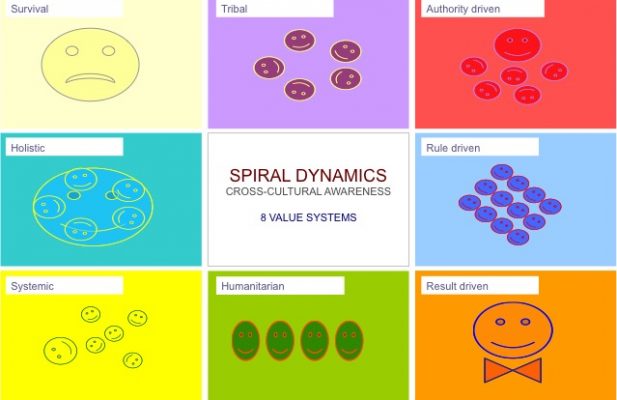
Have you ever asked yourself…
- Why your idea is accepted now, but it wasn’t last year?
- Why sometimes you feel more in sync with your colleagues and at other time not really?
- Whether we are moving forward or backward?
- Whether there is a natural order in the evolution of mankind, organisations and people?
- Why you move back and forth through phases of focusing on yourself and others?
- Why maintaining the status quo can be a tiring process?
- How soft and hard factors interact and influence each other?
- How you could easier understand the complexity of today’s environment?
If you can relate to a number of these questions, then Spiral Dynamics might be something you wish to discover and use.
The emergence of “the mature human being is an unfolding, emergent, oscillating, spiralling process marked by progressive subordination of older, lower-order behaviour systems to newer, higher-order systems as man’s existential problems change” stated Clare Graves, the path finder of Spiral Dynamics.
Spiral Dynamics is a model that helps to understand how people organise themselves, how they face change depending on their own values and needs. It also supports the mapping of the evolution of humankind in an open ended system. The model starts by exposing a map of human complexity in terms of systems of values that successively integrate previous levels of consciousness and develop into new ones. In this way it proposes a holocratic approach to evolution where the old is transcended and integrated in the new.
To date, eight levels of development are mapped into the model. Each level is identified by a letter-code and for convenience and communication purposes by a colour. The successive levels alternate their focus: it starts with an individual focus and then move to collective focus and again an individual focus followed by a collective focus and so on.
TIER ONE value-systems
- To survive individually (Beige) and collectively (Purple).
- To acquire an identity individually (Red) and collectively (Blue)
- To obtain satisfaction individually (Orange) and collectively (Green)
TIER TWO value-systems
- To help help address systemic risks and changes (Yellow) and to propose alternative models (Turquoise)
The Spiral Dynamics model encompasses also an analysis of the way of moving within a level and from one level to another or across the entire spiral.
It also explains the role of change agents, some being talented to make things evolve in one level, others across two levels or even more advanced ones, so called spiral-wizards, are comfortable to support and provoke change all the way through the spiral. For the latter category, it requires that their own centers of gravity is based in TIER TWO value systems.
Spiral Dynamics assesses:
- the opportunity,
- the prerequisites,
- the conditions, and
- the stages
of change.
The possibilities to apply the model range between personal and organizational development, companies and whole society. It has found a large scale real life application in the context of the ending of the Apartheid in South Africa where Don Beck has been an active part of the change process. It has also been used to coach international sport teams or organise companies striving for excellence in their organisational design.
We use it as a back bone of our change management activities. We are developing a model for systemic communication based on Spiral Dynamics. It aims at supporting leaders having to cater for the overall communication of a company.
